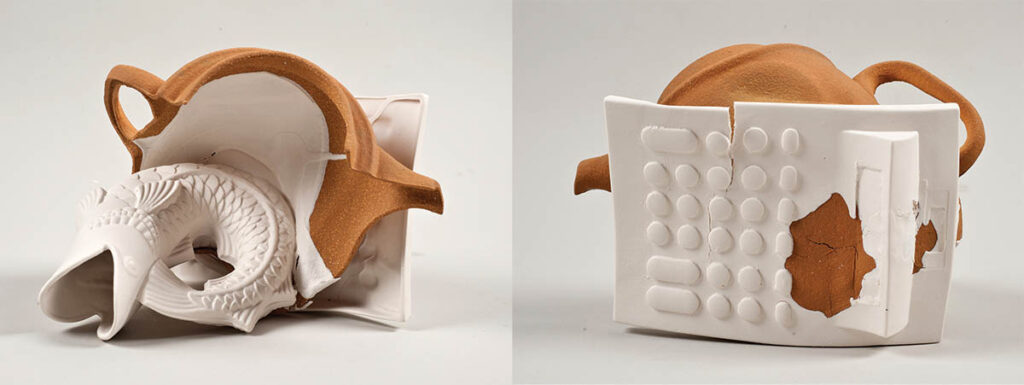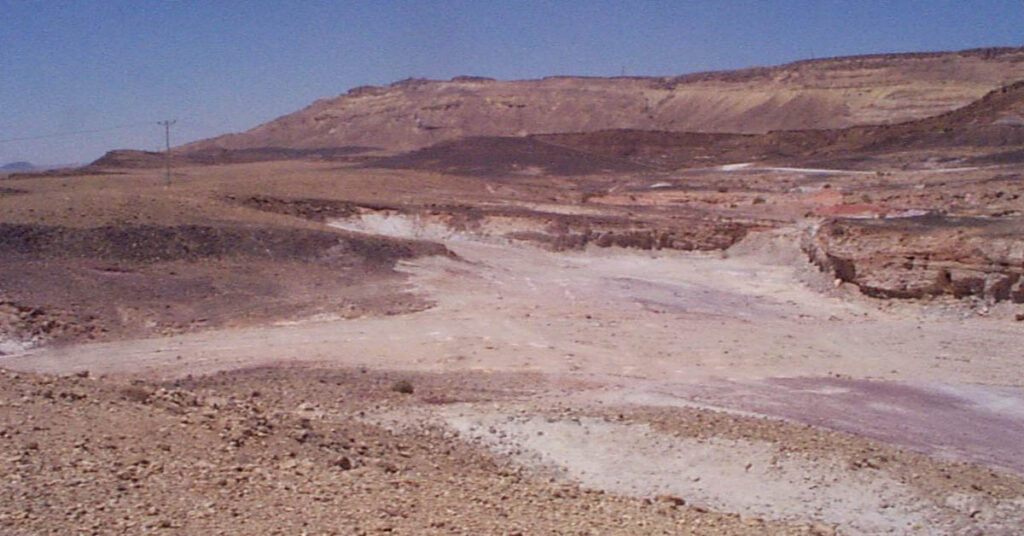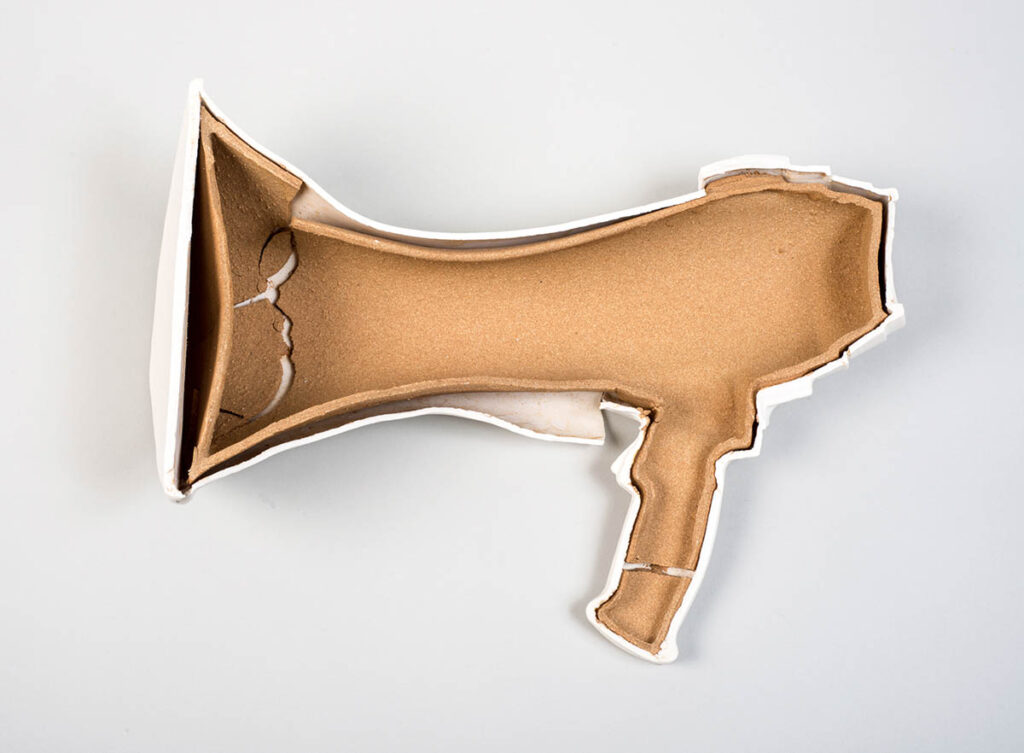
Shlomit Bauman, Untitled, 2013 S5 local Israeli clay and Porcelain h 22 w 28 d 18. Photo Ilan Amihai.
Shlomit Bauman combines clay from the Negev desert with refined porcelain to embody a clash of cultures.
The Ran Out exhibition deals with research aspects of the field of ceramic design, which are inspired by cultural and technological issues, both traditional and contemporary. I’m referring to ceramic design as a field in culture studies and I’m trying to examine its methods in the broad context of material culture. The cultural, technological and morphological differences properties of the raw materials that are used to cause the objects to resist, crack and distort. This creates a tension between the desire for similarities and connections, and the exposure to the different and the distorted.
- Shlomit Bauman, The installation detail, 2013, S5 local Israeli clay and Porcelain. Photo Ilan Amihai
- Shlomit Bauman, Untitled, 2013, S5 local Israeli clay and Porcelain h 22 w 42 d 6. Photo Ilan Amihai.
In order to create a series of works on the subject of localism—in connection with the concept that local raw materials are charged with meaning—I began working with local clay from the central-north Negev region (consisting of S5 clay). The fact that this local material has run out due to mining and use constitutes the essence of the exhibition that marks for me the point of no return of a changing reality and the depletion of natural, cultural and personal resources.

A restored mine that was formerly used for mining clay S5, in the area of Mitzpe Ramon. Mining was done by the Negev Industrial Minerals Ltd. (formerly – Clay and Pure Sand in the Negev Ltd.). The mine closed in 2000. Photo: Hanoch Saar
Through trial and error, I created encounters between different ceramic raw materials: on the one hand a local hard material and stubborn. On the other hand, the international, fashionable and noble porcelain. These, together with industrial and traditional working methods, are used as the object of research in the laboratory for the study of the local ceramic material culture.
“…In this project, Shlomit Bauman presents a series of ceramic works that look like ontological hybrids that cross the accepted boundaries between art and design. These works have symbolic and ideological value on several levels: political images, historical connections of various objects and their presentation – local terra cotta consisting of S5 clay…”
David Goss, 2013, Azal…Lock, Stock, and Barrel – on Shlomit Bauman’s exhibition, text for the catalogue, Periscope Gallery, Tel Aviv Jaffa, Israel
In addition, I decided to challenge artist vs. gallery relationships through an online crowd-funding site. I sold “souvenirs” from the resource that ran out (S5 clay) and thus managed to finance the production of the exhibition and the catalogue. In doing so, I tried to examine arrays of power relations between craft and art, and high and low.
Several years have passed since the Ran Out exhibition, and following the research conducted on the sources of local ceramic materials in Israel has found that the mining of clays and minerals for the purpose of ceramic material bodies industry is based on the removal and exploitation of clays at construction sites, and is carried out mainly in Palestinian-owned areas, without any regulation or supervision whatsoever. This fact recharges for me the discussion of the concept of “locality” and the meaning of that chunk of clay, with new layers of meaning.
About Shlomit Bauman
 Shlomit Bauman is a senior Lecturer at the Industrial Design Department of HIT – Holon Institution of Technology. She is a ceramics artist and designer, and she combines research and education. Bauman is the head curator of Benyamini Contemporary Ceramics Center. You can find her CV here.
Shlomit Bauman is a senior Lecturer at the Industrial Design Department of HIT – Holon Institution of Technology. She is a ceramics artist and designer, and she combines research and education. Bauman is the head curator of Benyamini Contemporary Ceramics Center. You can find her CV here.




